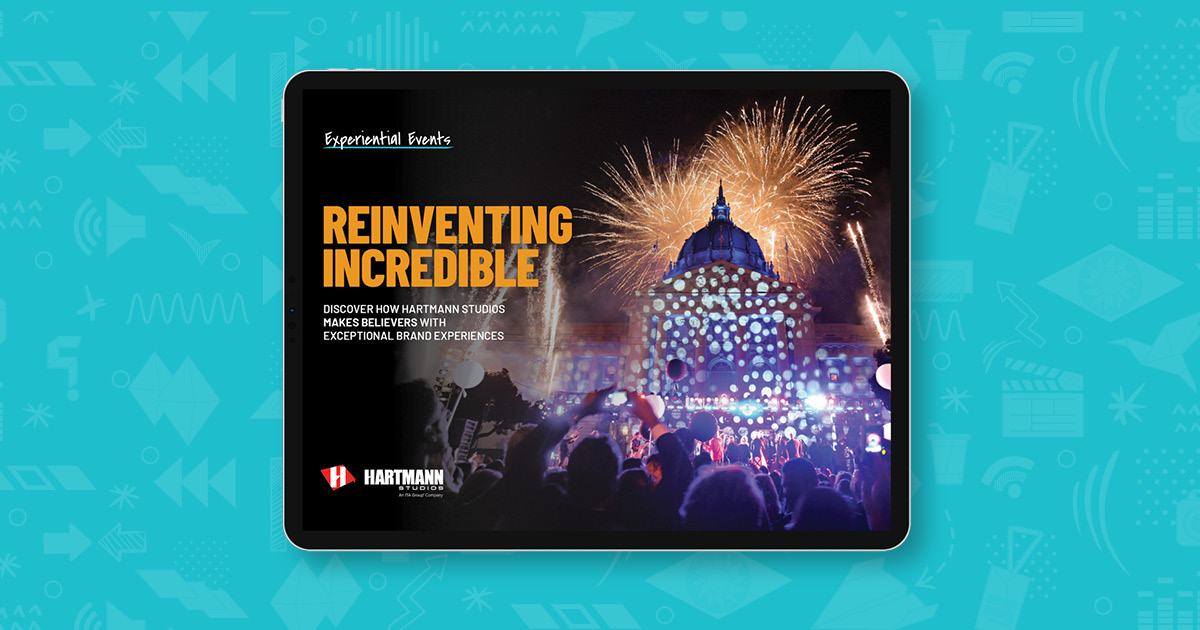How To Create A Successful Messaging Strategy: Writing In The Voice Of A Keynote Speaker
Monday November 28, 2022
4 Min Read
Sometimes a bad keynote speech is more memorable than a good one. Maybe the speaker has stage fright, they stumble over their words, they can’t read the downstage monitor or, worst of all, the writer didn’t write with the voice of the speaker in mind. There are so many things that can and will go wrong when presenting a keynote speech. It’s our job at Hartmann Studios to anticipate all possibilities and create a solid messaging strategy, from the start, to set any writer up for success.
We’d love to brag and say that we can write any keynote speech in our sleep, but finding the voice of the speaker is a unique process each time. There are 4 steps we take during this messaging strategy process:
1. First, do your research.
There’s always something new and interesting to know about every client’s business and their leaders, even if you’ve worked with them before. It’s important to always do some initial research. Check out their website, any recent news mentions, and their social media pages. But our best tip is to watch their recent interviews. Do their answers line up with everything else you found? What’s their cadence? Does the speaker speak in the voice of the company, or with their own personal style?
Once you’ve reviewed every resource available online, it’s time to compile your question arsenal, starting with: what is the purpose of the speech? You may think you know, but your speaker may surprise you. There are inevitably internal objectives for the gathering and niche audiences with whom your speaker wants to connect. So starting with, “What’s your goal?” will allow you to tailor the follow-up questions in a way that drives both intention and authenticity.
2. Be likable—find authentic ways to connect.
It should come as no surprise: one major thing that makes someone likable is their ability to listen. And if you’re trying to find their voice, listening and reflecting their own ideas back to them is going to net huge wins. Walking into your first meeting with an over-the-top smile and false promises won’t help build a fruitful working relationship.
Rather, find ways to genuinely connect and create that initial bond. This can happen simply through casual conversation. In fact, the majority of your first meeting shouldn’t be spent drilling down on the speech. Invite opportunities to learn more about their hobbies and interests. Finding some common ground will help you greatly when you might want to include anecdotes or experience-based metaphors in their presentation.
3. Build trust through clear strategy.
Some speakers are easier to build trust with than others. Many need to be convinced that they’re in good hands with you as their writer. And it makes perfect sense to be a little cautious, especially since they’re going to be the one onstage, in the spotlight, with all eyes and ears on them.
They need to know that you get them; you grasp their objectives and encourage their candor about any reservations they may have. To accomplish building this foundation, sometimes showing is better than telling. Demonstrate they have a safety net and that safety net is rooted in sound strategy.
We recommend drawing a mind map. Literally draw lines connecting key moments in their speech to key objectives for their audience. Clear tethers will instill confidence in your speaker, demonstrating that you’re considering every moment, every utterance on stage, but they will also help to highlight any potential weak points in your narrative. This approach will invariably result in conversations that will strengthen content, but also fortify collaboration and the notion that they’re not in this alone.
4. Be flexible.
Eventually you’ll have a (dare we say) final draft of your speech, and you’ll both be feeling pretty confident, but you can’t forget to stay flexible as you head into the final stretch. Be prepared for any unexpected changes or hurdles that might affect your gameplan, including a revised run of show, a change in your allotted time, new data points for inclusion, technological adaptations or even the presentation location. As a keynote writer, partner really, it’s your responsibility to find solutions down to the final hours, or even minutes, to maintain the messaging strategy while also staying true to the speaker’s voice. Flexibility is really the key to bringing your strategy to life.
Interested in learning more about our keynote writing strategies and support? Reach out and connect with us.
Read more stories
View AllAll Posts
Event Production and Trade Show Management with Jeff Bogan
What you need to know Jeff Bogan’s job is to bridge creative vision and technical execution teams for corporate events and trade shows held all over the globe. As Vice President of Production at Hartmann Studios, Jeff oversees multiple production departments to fulfill global event creative designs and deliverables for clients like Adobe, Cisco and...
5 Min Read
All Posts
Discover How Inventive Event Production Makes Believers
Use our new lookbook to spark ideas for your event experience design. We’ve compiled 40+ examples from our 40+ years of experience that showcase what it takes to reinvent event services: Transforming spaces into immersive experiences Incredible stages in imaginative places, anywhere. Outfitting unconventional spots and breaking new ground is our specialty. See how our...
Messaging, Campaigns + Brand Alignment
“Story First” Event Design (Part 3): Plotting Activations
What you need to know Taking a “Story First” approach to event activations boosts engagement and makes a lasting impact. Inviting attendees into the center of the action takes them from being passive observers to active participants. Part one of our series on “Story First” event planning introduces why and how to establish a cohesive...
6 Min Read



